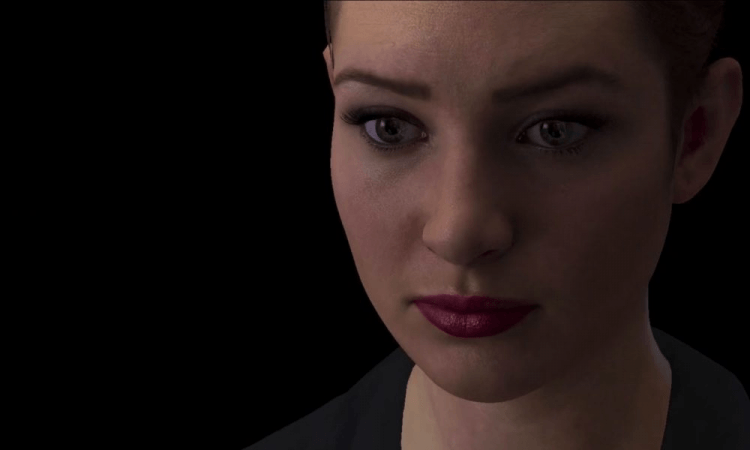
Photo credit: Pexels/Pixabay.
Apps are on the decline, but messaging apps buck the trend. They are now bigger than social networks. In India, less than 2 percent of its billion-plus mobile users are transacting online, but more than ten times that use messaging apps. Brands are starting to pick up on this, and 2017 is set to be the Year of the Chatbot.
“Chatbots are the new apps,” says Microsoft’s CEO Satya Nadella.
Half a century of chatbots
Chatbots aren’t new – its history can be traced back to the 1960s. ELIZA, created by MIT computer scientist Joseph Weizenbaum, imitated the language of a therapist with a sleek 200 lines of code.

ELIZA unabashedly tries to fake intelligence. Image credit: Fast Company.
Although there have been developments in the past 50 years, chatbots are still limited in their implementation.
The first-generation chatbot is most commonly used today. It will present fixed responses, and clarify user intent with menus in response to simple questions. The 1-800 Flowers chatbot follows a script, so the experience is more like answering multiple-choice questions.
In fact, Facebook’s AI bots had a 70 percent failure rate. Moreover, new scenarios are common, which means that new rules must be written and old rules must be modified to deal with them.

The chatbot gets confused when you go off the predetermined script. Image credit: Digiday.
The second-wave chatbot boom
Enter the new chatbot, which have voice recognition capabilities. It is artificial intelligence (AI)-based with machine learning (ML) and natural language processing (NLP). Designed to adapt and create contextualized responses, second-gen chatbots approach actual human conversation.
Today, you can have Siri set reminders, search, and place orders online. Duolingo introduced chatbots in late 2016 to its app to allow users to learn German, French, and Spanish by having AI-powered conversations with a bot, simulating real conversation.
Customers have high expectations for chatbots. 63.9 percent of surveyed customers want businesses to communicate with them via messenger apps, and 50.6 percent expect to be able to reach the business 24/7. And 73 percent of shoppers said they would not use a company’s chatbot again after a bad experience, according to a DigitasLBi poll. It’s crucial that brands move beyond the first-gen chatbot and create consumer interactions that feel authentic.
“2016 brought us the popularity of chatbots, but brands will learn in 2017 that chatbot interactions can only hold a meaningful customer conversation for so long,” says Peter Friedman, CEO at social customer experience company LiveWorld on Retail Touchpoints.

A typology of chatbots. Image credit: Grid Dynamics.
Article continues below.
Are you a mature startup with a next-generation chatbot that delivers highly personalized, human-like experiences?
KPMG Digital Village is supporting a number of organizations in Asia with their co-innovation accelerator programs. This program will culminate in a Demo Day, after which there will be a real opportunity to work with the company to pilot and implement your solution in the region and beyond.
If your technology can engage customers in the same way that a human could, apply now! Registration closes 16 April 2017, 23:59 (GMT +8).
Going off-script
A customer cries. Behind the computer screen, the agent asks, “R U okay?”
This is the third generation of chatbots: on top of providing functional services, they will have emotive capabilities and the ability to react to unexpected situations. Such capabilities will make possible richer communication with increasingly demanding customers.
Artificial neural network algorithms are modeled after how the human brain works, and have been behind some of the most exciting advances in cognitive computing. According to an interview with KPMG by The Guardian, language comprehension by these cognitive agents have improved by 20 percent over the past two years, with promising advances to come within the next few years.
Nadia, a chatbot made for the Australian government, can read people’s emotions and adjust her answers to fit the user’s emotional state.
Voiced by Australian Oscar-winning actress Cate Blanchett, the more she interacts with real people, the better she will get at reading people’s emotions. She’s so lifelike that her creators claim the hearing-impaired can read her lips.

This is Nadia. Image credit: The Tech News.
Amazon, too, is working on making Alexa recognize human emotions and react in a personalized manner. Voice call analyst Cogito is studying customer-agent relations to help robots become more humanized.
The race is on. UK robotics startup Emotech raised US$10 million in Series A funding to continue building a prototype virtual assistant, Olly, whose personality evolves based on interaction, so “no two Ollys will be the same.”
Chatbots are starting to lose their scripts. While the technology is still in its early stages, it is likely that we will soon be communicating with bots in our everyday lives. The potential impact of chatbots on our lives is immense — from better retail experiences to medical assistants. The only question is when.
KPMG Digital Village is supporting a number of organizations in Asia with their co-innovation accelerator programs. If you are a mature startup with a next-generation chatbot that can engage customers in the same way that a human could, apply here. Registration closes 16 April 2017, 23:59 (GMT +8).
This post Chatbots, after half a century, are starting to lose their scripts appeared first on Tech in Asia.
from Tech in Asia https://www.techinasia.com/chatbots-lose-scripts
via IFTTT

No comments:
Post a Comment